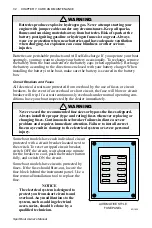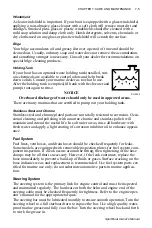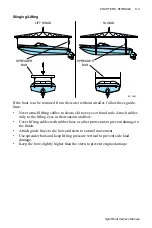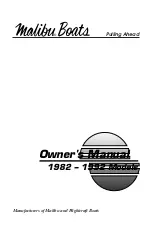
Sport Boat Owner’s Manual
10-1
KC-1651
SOCKET
RELEASE
HANDLE
TOWING VEHICLE
HITCH
PROPER SIZE
TOW BALL
CLAMP
TRAILER
COUPLER
RELEASE HANDLE
LOCK PIN
LATCH
CHAPTER 10: TRAILERING
This section provides information about trailering. It describes the hitch and
safety chains, backing your trailer, preparing to launch, launching, and loading
your trailer. Also included is a trailering checklist.
• The trailer must be matched for the boat’s weight and hull.
• The towing vehicle must have the capability of pulling the load.
Pulling a load that exceeds the trailer’s or vehicle’s towing capacity
may cause loss of control.
NOTICE
Check the certification label on the left forward side of your trailer. The
label is required to show the Gross Vehicle Weight Rating (GVWR),
which is the load carrying capacity plus the weight of the trailer itself.
Be sure that the total weight of your boat, engine, gear, and trailer do
not exceed the GVWR.
Trailer laws on things such as lighting, registration, trailer brakes, gross vehicle
weight, etc., vary widely from state to state. Contact your state Department of
Motor Vehicles (and that of other states through which you may be traveling) for
laws with which you must be in compliance.
Hitch
Hitches are divided into classes that
specify the gross trailer weight (GTW)
and maximum tongue weight for each
class. Always use a hitch with the same
class number as the trailer, or greater.
Most boat trailers connect to a ball hitch
that is bolted or welded to the towing
vehicle. Clamp-on bumper hitches are
not recommended.
The trailer hitch coupler must match the
size of the hitch ball. Never use a hitch
ball that does not match the trailer cou-
pler. The correct ball diameter is marked
on the trailer coupler.
!
WARNING
KC-1700











































